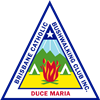Leader: Greg 0418 122 995
Meet: Queen St Bus Station 1E / Griffith Uni Busway Station
Time: 2.40 pm / 3.00 pm
Cost: Free
Grade: S32
Distance: 5.2km.
Emerg Off: Greg 0418 122 995.
History
Mt Gravatt was first observed by John Oxley in 1823 when he noticed a “high mount to larboard”. Despite the fact that Commandant Cotton and Andrew Petrie were lost in the area in 1836, it was not noted again until the Government Surveyor, Robert Dixon in a survey undertaken around 1840, named Mount Gravatt after Lieutenant George Gravatt who was commandant at Moreton Bay for three months in 1842 preparing the colony for the change over from penal settlement to free settlement.
https://moretonbayandmore.com/2021/11/07/the-british-military-presence-in-brisbane/
The aborigines called it kaggurmabul or caggara-hahbill which means “place of echidna” or “echidna rests here”. Mount Gravatt (195m) dominates the entire environment in the Mt Gravatt, Mt Gravatt East and Upper Mt Gravatt areas. Before European settlement this area was heavily timbered, particularly with mahogany, and numerous small creeks flowed down the mountain and into large creeks or swamps at the foot. Fortunately, not all of the forest has been cleared and remnants of the original eucalypt forest remain.
Description
The area contains vegetation types ranging from open forest, shrubland and woodland to heaths and scrub understoreys. The Reserve contains areas of red mahogany, grey ironbark, brushbox, tallowwood and broad leafed spotted gum. Bailey’s stringybark is an example of a species which is common in the Mt Gravatt Reserve but rare in the rest of the Brisbane area. The shrub layer consists of buttonwoods and cheese trees, acacias, she oaks, dogwoods, wild may and grass tree. The herb layer consists of species such as red natal grass, blady grass, native sarsaparilla, may vine and fern species.
Geologically, the Mt Gravatt Reserve contains regions of folded cherts and also a cave formed by percolating groundwater in a colluvial valley fill. This cave is the largest example known in southeast Queensland.
At 195m the summit is a prominent vantage point for Brisbane affording expansive views across to Moreton Island, Moreton Bay, Brisbane City and the Brisbane Hills.
Our route shall be along the reasonably flat southern side to a water tank, then undulating while climbing up the mountain by initially a semi-circular track touch the road and then a sort-of uphill track to the lookout at the top. From here, there are marvellous views to the north & the east. Absolutely spectacular; and it will still be light enough to soak in all that you can see. Down hill will be a bit streepish as well: but we are Strollers and can take it into account.
With all that said, this Stroll is all on tracks, though some may not be well maintained. Let me blame Cyclone Alfred – everyone else does. The lower down tracks should be in acceptable condition, the one going to the Summit should also be good. And the one down. The dodgy one will be on the north side of the mount – it is an unmade portion of Shire Rd – it goes up & down, into gullies and can be a bit rough underfoot. The height gain from start to the top is 107m (about 20 stories if it was a building), though the steep bit is only 95 (about 19 stories). Some tracks will have loose gravel underfoot, some have washouts, some have steps, some have roots & other obstacles.
The tracks used, for those following the map, shall be: Farm Fire Trail, Eastern Outlook Trail, Geebung Track, The Summit Track, Un-named track down to the water tanks, a visit to Gertrude Petty Place, over to the entrance and along the unmade Shire Rd to Goodenia Track, through the Uni to Sports Rd and back to the Busway.
